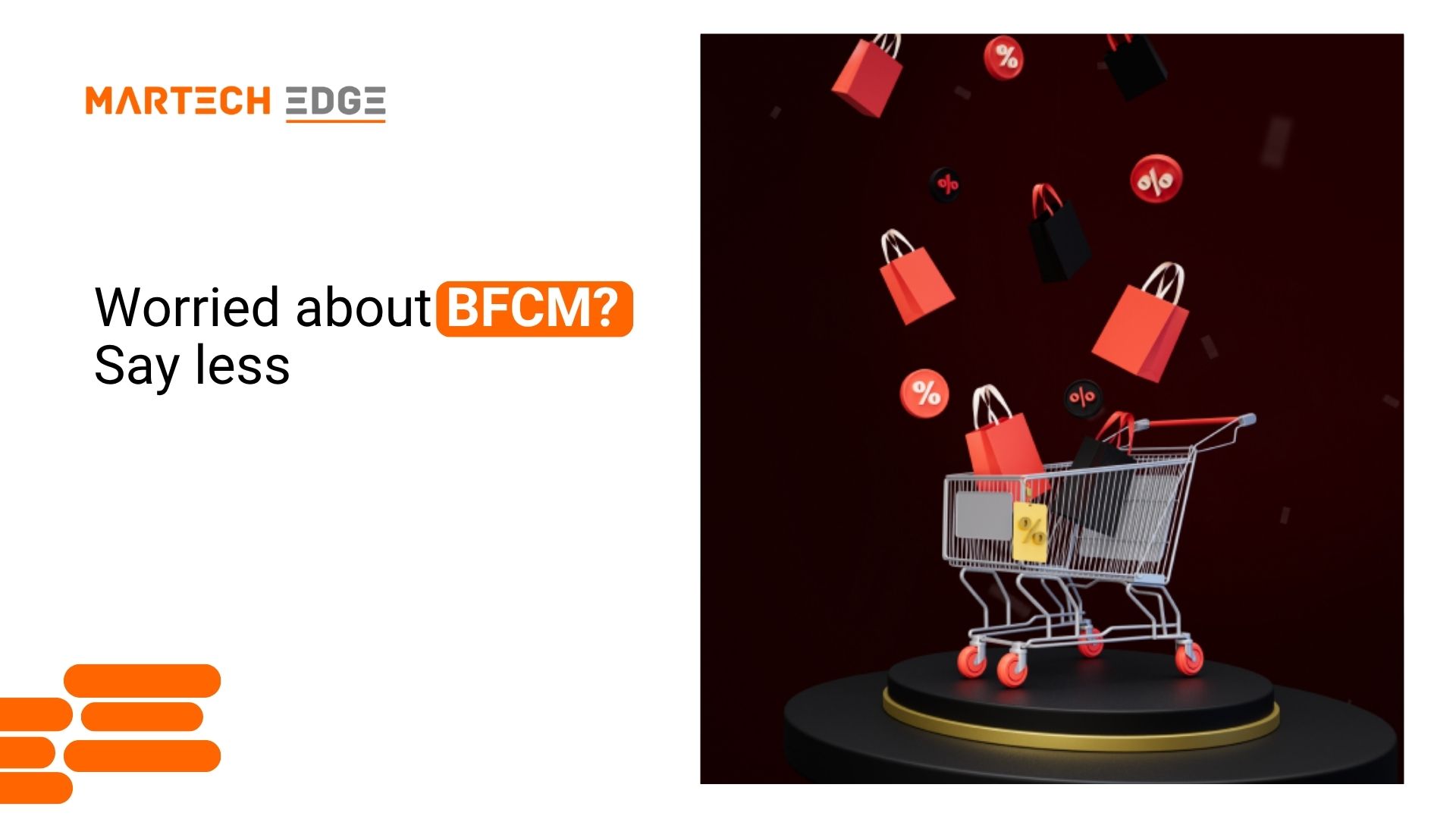

customer experience management customer experience management
Worried about BFCM? Say less
Worried about BFCM? Say less
The noise your consumer experiences when shopping online is deafening. Their inbox is full, their phone pings nonstop. Brands they love, brands they don’t care about, brands they bought from once three years ago and never got around to unsubscribing from—they’re all vying for their attention.
Brands sent 3.9 billion emails and SMS messages last Black Friday-Cyber Monday (BFCM), and we’re expecting more this year. Yet, that approach doesn’t align with customer mindsets. Consumer confidence is down amid higher prices, tariffs, and other concerns. Adding to that, more people than before (12.7%) expect their income to decrease.
The result is tighter wallets and less spending. Visibility is already shrinking in the AI world, and consumers aren’t shy about criticizing a brand that does something like remove a comforting figure from its logo without notice.
Here’s how to say less while delivering more impact, building connected, cross-channel experiences that thrive.
Make email and SMS work together
No one wants to hear the same thing from you twice, and they definitely don’t want to hear you only talk about yourself. Disconnected emails and texts from multiple platforms risk becoming annoying. Uncoordinated messages cause customers to notice and bounce.
Consumers expect brands to meet them where they are, with messaging that fits the moment. Combining email and SMS thoughtfully leads to real results: I’ve seen a 33% lift in conversions for brands that make the two work in sync.
That means intentional coordination, not more messages. When attention is scarce and inboxes are overflowing, thoughtfully integrating email and SMS helps you cut through the clutter with clarity and purpose. Send an SMS to nudge interest, follow with an email to add more context, and then go back to SMS with a targeted offer. Multiple channels and devices, one continuous conversation.
Orchestrating across channels is about using the right tools, but it's also about timing and trust. If you know how a customer is engaging via SMS, use that insight to shape the next email. If they opened an email but didn’t click, it's time for a quick reminder text, not another lengthy message in their inbox.
Every message should feel like part of a larger story, not a random ad break.
Don’t betray your customers
Lazy brands adopt the “classic” personalization tactic of adding a consumer’s name to an email subject line (even if it’s a ridiculous joke input like Boaty McBoatface). Smart brands truly personalize by knowing what a customer browsed, when they left the site, and what size shirt is still sitting in their cart.
More than 80% of consumers will ditch a brand if they feel it doesn’t know them; the same proportion won’t even open a message that feels off. One irrelevant ping is the difference between being beloved and being a desperate “pick me” brand. Know your customer or lose them.
The irony is that many brands have the data they need to improve—they’re just not using it. Behavioral insights, shopping patterns, and purchase history are all there, collecting dust like an old video game cartridge. The right AI tools can bring these insights to life, and many customers approve of brands using their data as long as it improves their experience.
A customer gifting you their phone number is like them inviting you into their home. It connects behavior across devices and opens the door to more relevant communication. That behavioral thread—what shoppers browse, click, or abandon—forms the foundation for truly personalized experiences.
Misusing that number with too many pings and irrelevance is the digital equivalent of trashing their furniture, leaving their food out to spoil, and tossing an egg at the door as you depart. You won’t be welcomed back, and they’ll speak poorly about you to their friends.
Put your data to work and message when it matters. See when a customer abandoned their cart and what incentive might help close the loop just when they need it; for example, the discount ends tonight, and there are only two items left in their size.
Ground your strategy in trust and behavior-driven insights. Relevance becomes automatic, and results follow.
Know when to engage—and when to lay low
It doesn't matter how personalized your message is if your timing is off.
During BFCM, customers are comparison shopping, and purchasing priorities are changing fast. If you don’t know what your customer is browsing right now, you don’t really know what they want. You know what they wanted yesterday.
That’s where smart automation comes in. The most effective messages are those triggered by real-time behavior. What people clicked, what they hovered on, what they almost bought.
AI can help dissect message trends and auto-label creative assets so marketers can focus on what to say next—or whether to say anything at all. In fact, one of the most underappreciated benefits of intelligent messaging is knowing when to stop. Intentional subtlety is winning with Gen Z. You don’t need “Pink Pony Club” levels of grandiose flair. Sometimes, sending nothing is the best move.
Let AI read the signals and hold back if the shopper is unlikely to convert. Messages become more meaningful and effective when they arrive with purpose, not on a fixed schedule.
Less noise, more signal
Shoppers don’t want to be talked at. They want to be understood.
When you combine purposeful orchestration across channels—timing your email and SMS to avoid overload and letting each message build on the last—your outreach starts to feel more like a friend and less like a nagging neighbor who criticizes your lawn grass for being too long.
Smart brands will set a new metric for BFCM 2025. Instead of messages sent, look at attention earned per message. That brand affinity and loyalty will last long after the Cyber Monday promo code has expired.

Keri McGhee, Chief Marketing Officer, Attentive
Aurthor Bio: Keri McGhee is the CMO at Attentive, the AI marketing platform for leading brands. She leads strategic global marketing to further build the Attentive brand, overseeing product marketing, revenue marketing, events, partner marketing, communications and content, and brand creative.
Keri's past experiences include leading marketing at various start-ups and as a senior director at Zillow, where she led the B2B marketing team responsible for strengthening partner loyalty and experience for 60,000+ real estate partners. She got her start in tech at Expedia leading both consumer and corporate travel marketing teams.
Company Bio : Attentive® is the AI marketing platform for 1:1 personalization redefining how brands and people connect. Attentive turns messages into moments that drive action, revenue, and loyalty with powerful technology that unifies customer data, while providing the expert knowledge and unparalleled support that helps brands succeed.
Trusted by leading global brands like Crate and Barrel, Urban Outfitters, and Carter’s, Attentive provides mobile-first identity, smart orchestration, and enterprise-grade compliance and deliverability, supporting trillions of interactions across more than 70 industries. To learn more or request a demo, visit www.attentive.com or follow us on LinkedIn, X (formerly Twitter), or Instagram.




